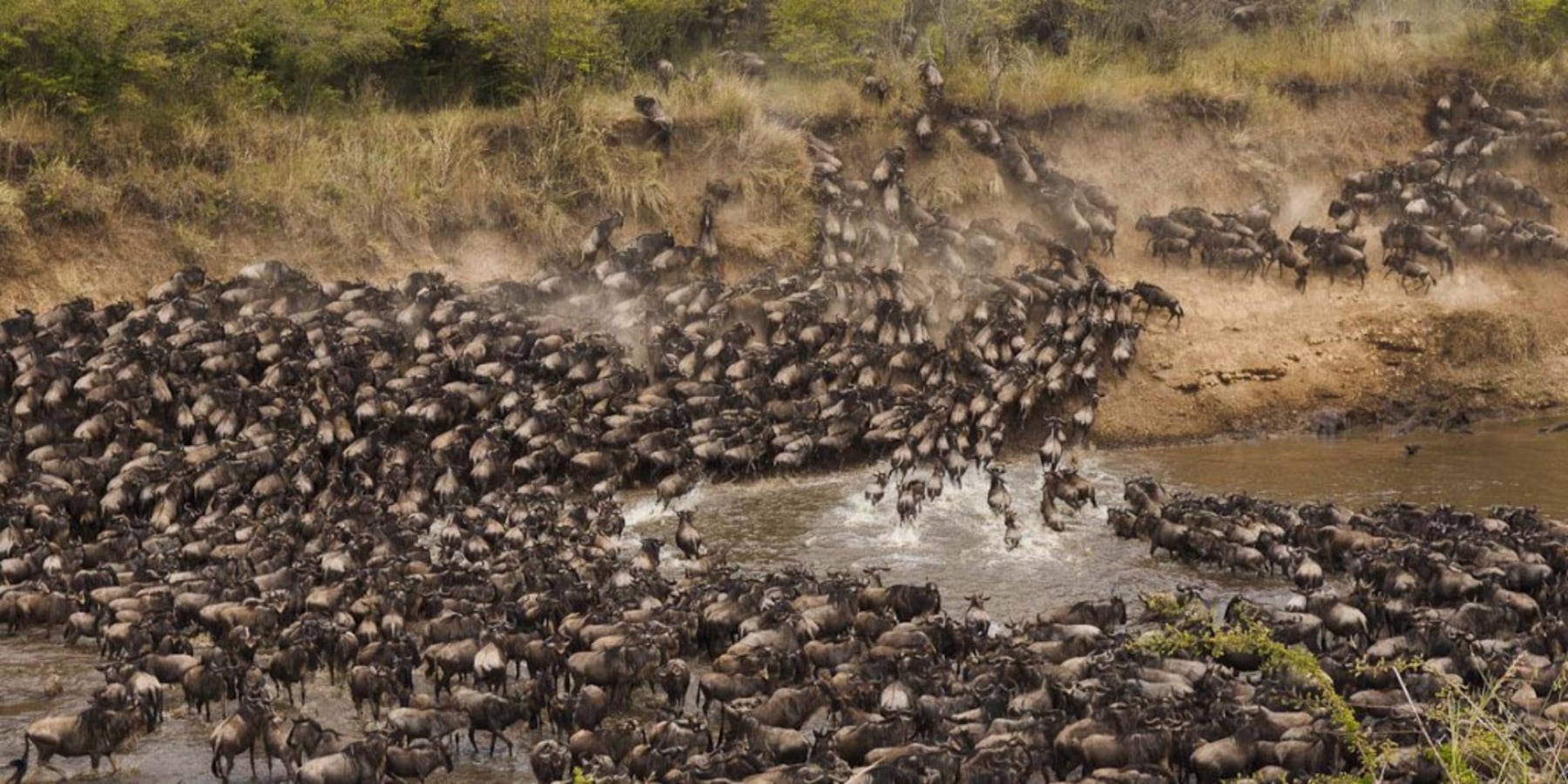
Home to Africa's richest resident population of wildlife, you can visit the Masai Mara and Serengeti at any time of year, but if your goal is to see the wildebeest migration then you need to be in the right place at the right time.
The Great Migration is a natural phenomenon, as old as the land itself. Seasonal rainfall is the trigger that sparks the mass movement of mega herds in pursuit of the sweet, new grasses that wildebeest love. Since nature sets the schedule, planning a successful migration safari takes experience and excellent local knowledge.
The migration takes a full year to complete a single cycle. That means you can see it throughout the year but because the animals cross huge distances, certain highlights only happen in specific months. For instance, the mass birthing of calves takes place between January and March in the southern Serengeti, while the dramatic river crossings occur between July and August in the far west.
Planning a migration safari?
December
The wildebeest start moving in their hundred thousand out of Kenya's Masai Mara and onto Tanzania's southern Serengeti plains and the northern Ngorongoro Conservation area. Tens of thousands of zebras and gazelles accompany the wildebeest into Tanzania.
January
Wildebeest spread out across the short grass plains of Tanzania's Southern Serengeti and northern Ngorongoro Conservation area - if the land could support them year round, the wildebeest would never leave this lush, green landscape.
February
Over a period of about three weeks in February, several hundred thousand calves are born. Pregnant wildebeest give birth more or less simultaneously so expect to see calves from a few hours to a few days old while on game drives. You might even witness a birth - unlike other antelope, wildebeest do not hide their newborns but encourage them to get on their feet immediately and join the herd where there is safety in numbers.
March
There is a very high probability of witnessing a kill on a game drive in this period. The calves are easy prey for Africa's big predators: lions, cheetahs, leopards, spotted hyenas, and rare wild dogs.
April
April marks the start of the wildebeest migration. In April, the waterholes start to dry up and the southern Serengeti plains have been mowed to stubble by more than a million wildebeest, zebra and gazelle grazing there. As a result, small herds gradually merge into vast columns of wildebeest on the march – it’s a spectacular sight: the mega herd covers the vast plain to the horizon.
May
Adult wildebeest come into season simultaneously – this ensures they give birth in a mass calving in February, which offers their newborns the safety of numbers. The result is spectacular: breeding males bellow and grunt to advertise their presence, chase off rivals and try to round up females to keep them from wandering off. Calves and their mothers call to each other constantly so they don't get separated, raising a magnificent cacophony unlike anything else in Africa. By May, the herds have usually reached the short-grass plains of the mid-Serengeti and are heading in the general direction of the Seronera Valley in Tanzania.
June
By June, the rut is in full swing and the last column of the mega herd arrives from the southern plains. Combined with the rut, the movement of the massed herds and the constant attacks on all sides by predators makes this a spectacular time to witness the Migration.
July to September
The migration heads north out of the central Serengeti, splitting into two routes. The main group heads into the western corridor crossing the Grumeti River in spectacular stampedes. Enormous crocodiles wait patiently to snatch wildebeest as they surge across the river. The wildebeest continue to move steadily across the Grumeti region, making another perilous river crossing toCross the Mara River and reach the lush grazing in Kenya's Masai Mara. The smaller group heads directly north from the central Serengeti into the northern plains and from there into the Masai Mara, avoiding the river crossings.
October to November
The sheer number of wildebeest arriving in the Masai Mara area is staggering, as is the variety of resident wildlife - zebra, giraffe, buffalo, elephant, hyena, lion, eland and gazelle to name a few. From August until the summer rains start in November, the Masai Mara is lush and green and offers the best game viewing in Africa. Once the rains start and the wildebeest have recovered their strength, they begin moving south to their Serengeti breeding grounds which are green and lush once more.

